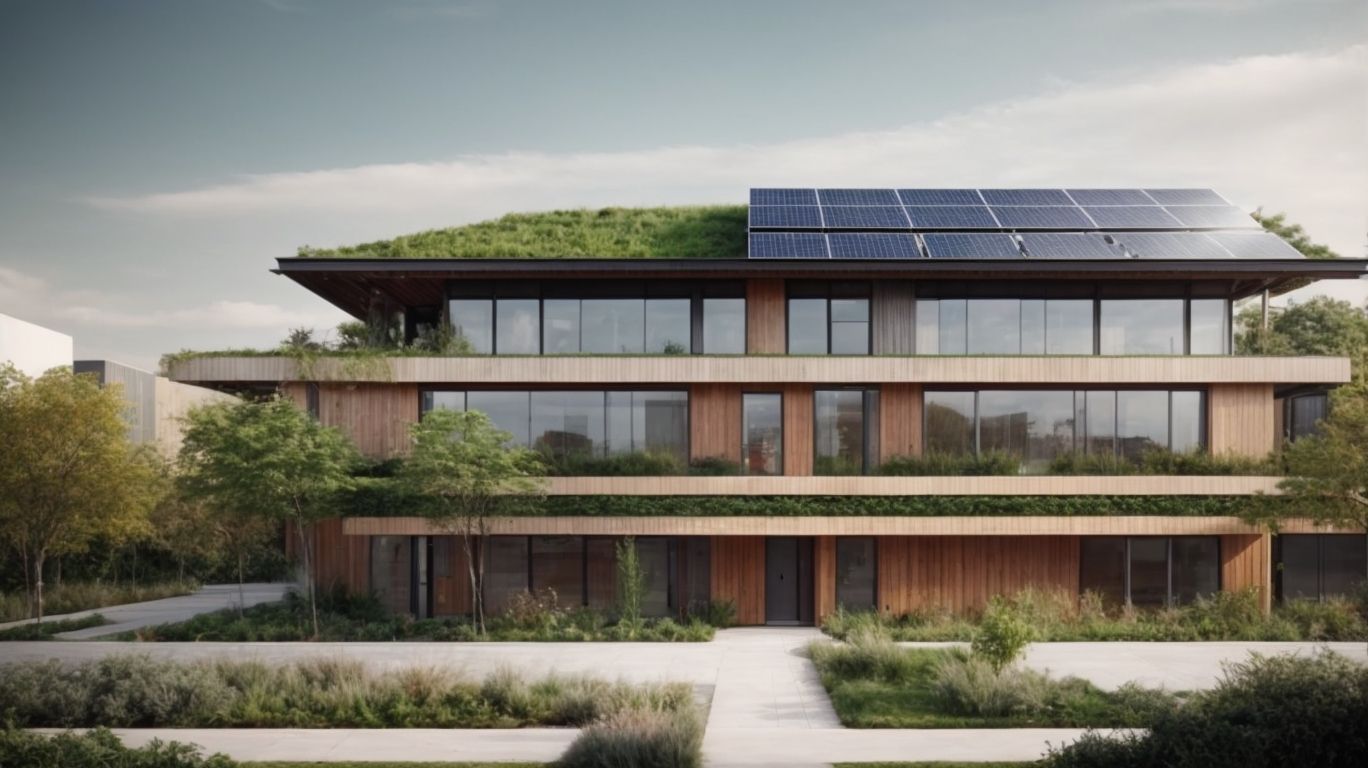
Energy-Efficient and Sustainable Retrofitting Options
Retrofitting has become an increasingly important topic in the realm of sustainable and energy-efficient building practices. In this article, we will explore the concept of retrofitting, why it is important, and the benefits it offers.
We will also delve into the different types of retrofitting, such as energy-efficient and sustainable options, and discuss how to decide which option is best for a particular building. We will cover the key elements of energy-efficient and sustainable retrofitting, including insulation, energy-efficient appliances, sustainable materials, water efficiency, and indoor air quality.
Whether you are a building owner, developer, or simply interested in sustainable living, this article will provide valuable insights into the world of retrofitting.
What Is Retrofitting?
Retrofitting is the process of updating and modifying existing buildings and infrastructure to make them more energy-efficient, sustainable, and aligned with green building standards.
Retrofitting involves integrating energy-efficient technologies and improving insulation, upgrading heating, ventilation, and air conditioning (HVAC) systems, and implementing renewable energy sources. This not only enhances building performance but also contributes to a reduction in energy consumption and greenhouse gas emissions, aligning with sustainable design principles.
By retrofitting older structures, they can be brought up to modern energy efficiency standards, reducing their environmental impact and operating costs. This process plays a crucial role in improving the overall sustainability of urban environments and helps in the global effort towards a greener future.
Why Is Retrofitting Important?
Retrofitting holds immense importance due to its role in promoting energy conservation, fostering eco-friendly practices, and enhancing the overall sustainability and design of buildings and infrastructure.
Retrofitting plays a pivotal role in reducing energy consumption, lowering carbon emissions, and minimizing the environmental impact of buildings. By incorporating innovative technologies such as energy-efficient HVAC systems, smart lighting, and insulation upgrades, it contributes significantly to global efforts towards sustainability.
Furthermore, retrofitting supports the transition towards a more sustainable future by repurposing existing structures, reducing waste, and conserving resources. This approach aligns with the principles of adaptive reuse, circular economy, and green building standards, providing long-term benefits for both the environment and occupants.
What Are The Benefits Of Retrofitting?
The benefits of retrofitting encompass a wide range of options and solutions that contribute to green building practices, improved energy efficiency, substantial energy savings, and a positive environmental impact.
Incorporating green building options, such as using eco-friendly materials and optimizing natural lighting and ventilation, can greatly enhance the indoor air quality and reduce the ecological footprint of retrofitting projects.
Energy-efficient solutions like installing LED lighting, smart thermostats, and solar panels can significantly decrease energy consumption and operational costs. Sustainability measures, such as utilizing recycled materials and implementing water conservation strategies, further promote resource efficiency and environmental stewardship in retrofitted structures.
The holistic environmental impact of retrofitting is evident in the reduction of greenhouse gas emissions, decreased reliance on non-renewable resources, and overall contribution to a more sustainable built environment.
What Are The Different Types Of Retrofitting?
Various types of retrofitting include building retrofits, energy retrofit solutions, sustainable construction practices, and upgrades aimed at enhancing the overall performance and sustainability of existing structures.
These retrofitting practices are crucial in achieving energy efficiency, reducing environmental impact, and improving the comfort and functionality of buildings.
Building retrofits focus on enhancing the structural integrity and safety of existing properties, often incorporating seismic upgrades and reinforcement measures.
Energy retrofit solutions, on the other hand, prioritize the optimization of energy usage in buildings through the integration of advanced technologies such as solar panels, smart lighting systems, and insulation improvements.
Sustainable construction methods emphasize the use of eco-friendly materials, renewable energy sources, and efficient water management, contributing to long-term environmental preservation and resource conservation.
Upgrades, including HVAC system enhancements, building envelope improvements, and automation systems, play a significant role in elevating the overall performance and resilience of structures.
Energy-Efficient Retrofitting
Energy-efficient retrofitting focuses on reducing energy consumption through enhancements to the building envelope, insulation, HVAC systems, lighting, and the integration of advanced energy-efficient technologies and retrofits.
These improvements address the thermal efficiency of a building, reducing heat loss and gain through walls, roofs, windows, and doors, while insulation upgrades aim to minimize heat transfer.
HVAC system enhancements prioritize energy-saving equipment and controls to optimize air distribution and temperature regulation. Meanwhile, lighting solutions involve the adoption of LED fixtures and advanced controls to minimize energy usage.
Integration of energy-efficient technologies and retrofits extends to smart building systems, renewable energy sources, and efficient appliances for a comprehensive approach to energy conservation.
Sustainable Retrofitting
Sustainable retrofitting involves the use of renewable materials, green technologies, passive design strategies, sustainable architectural practices, and the pursuit of green building certification through sustainable solutions and practices.
These components play a crucial role in making buildings more energy-efficient and environmentally friendly while also improving the overall indoor quality.
Renewable materials, such as reclaimed wood or recycled metal, contribute to reducing the environmental impact of retrofitting projects. Green technologies, including solar panels and energy-efficient HVAC systems, help minimize energy consumption and reliance on non-renewable resources. Passive design principles focus on optimizing natural light and ventilation to reduce the need for artificial heating and cooling, enhancing the building’s sustainability. Sustainable architectural approaches blend seamlessly with these strategies, emphasizing long-term durability and ecological compatibility.
Green building certification, such as LEED (Leadership in Energy and Environmental Design), validates the project’s sustainable attributes and compliance with stringent environmental standards, ensuring a holistic and responsible approach to sustainable retrofitting.
How To Decide Which Retrofitting Option Is Best?
Selecting the optimal retrofitting option involves assessing the building’s specific needs, considering budget constraints and return on investment, and evaluating the environmental impact of proposed energy-efficient measures.
This process requires a comprehensive understanding of the building’s energy usage patterns, structural integrity, and the potential for incorporating renewable energy sources.
It’s crucial to evaluate the cost-effectiveness of different retrofitting options, including the installation of energy-efficient HVAC systems, insulation upgrades, and smart building technologies. The environmental impact should be carefully weighed, with a focus on reducing carbon emissions, minimizing waste, and promoting sustainable building practices to achieve long-term energy efficiency.
Assessing The Building’s Needs
The assessment of the building’s needs involves conducting comprehensive energy audits, evaluating resource efficiency, and identifying suitable energy-efficient solutions and sustainability measures to address specific retrofitting requirements.
Energy audits provide a detailed analysis of the building’s energy consumption patterns, helping to determine where improvements can be made. Alongside this, the assessment of resource efficiency takes into account the building’s water usage, waste management, and overall resource consumption.
By identifying the specific areas for improvement, such as lighting, insulation, and HVAC systems, energy-efficient solutions can be tailored to the building’s unique needs. Sustainability measures are explored to promote environmentally-friendly practices and reduce the building’s overall carbon footprint.
Considering Budget And ROI
The consideration of budget and return on investment (ROI) for retrofitting entails evaluating potential energy savings, aligning with green building standards, and supporting sustainable development practices within defined financial parameters.
This approach plays a crucial role in ensuring that retrofitting projects not only deliver immediate cost savings but also contribute to long-term environmental sustainability.
By prioritizing energy-efficient technologies and materials, organizations can reduce operational expenses and minimize their ecological footprint. Embracing green building standards promotes healthier indoor environments and enhances overall building performance, aligning with the principles of sustainable development.
Adhering to financial constraints encourages thoughtful decision-making and fosters responsible resource management, ultimately creating a win-win situation for the environment and the bottom line.
Evaluating Environmental Impact
Evaluating the environmental impact of retrofitting involves assessing the adoption of green practices, compliance with building codes, and the development of sustainable infrastructure to minimize the carbon footprint and promote resource efficiency.
This evaluation process often begins with a thorough analysis of the existing building systems and materials to identify areas for improvement. It also encompasses an examination of the potential effects on air and water quality, energy consumption, and waste generation.
The goal is to implement measures that contribute to the preservation of natural resources and the enhancement of overall environmental quality. It entails promoting the use of sustainable and renewable materials, as well as efficient energy systems, in alignment with the principles of eco-friendly construction and design.
What Are The Key Elements Of Energy-Efficient Retrofitting?
Key elements of energy-efficient retrofitting include advanced insulation solutions, the integration of energy-efficient appliances, the utilization of renewable energy sources, and the implementation of energy-efficient design principles.
Insulation advancements play a vital role in preserving energy within a structure, reducing heat transfer, and maintaining a consistent indoor climate. Incorporating energy-efficient appliances further enhances the efficiency of a building, such as energy-saving HVAC systems and smart thermostats.
Utilizing renewable energy sources, like solar panels or geothermal heating, can significantly reduce reliance on traditional energy grids. The application of energy-efficient design principles, such as proper orientation, shading, and natural ventilation, contributes to the overall sustainability and energy performance of a retrofit project.
Insulation
Insulation plays a pivotal role in energy-efficient retrofitting, encompassing enhancements to the building envelope, the integration of advanced insulation materials, and the application of energy-efficient technologies and measures to minimize energy consumption.
Insulation plays a crucial role in regulating temperature, minimizing heat loss, and preventing thermal bridging in buildings. By optimizing the building envelope, insulation greatly contributes to maintaining indoor comfort and reducing the need for heating and cooling systems.
With the use of advanced insulation materials like aerogel or vacuum insulated panels, superior thermal performance can be achieved, allowing for space-efficient insulation solutions. When combined with energy-efficient technologies such as smart thermostats and LED lighting, these measures can result in significant energy savings and a reduced environmental impact.
Energy-Efficient Appliances
The integration of energy-efficient appliances is a crucial aspect of energy-efficient retrofitting. This not only contributes to reduced energy consumption, but also supports sustainable solutions and delivers substantial energy savings over time.
By incorporating energy-efficient appliances, households and businesses can significantly lower their energy bills, reduce their carbon footprint, and contribute to environmental conservation efforts.
These appliances utilize advanced technologies such as energy-efficient motors, thermal insulation, and smart control features to optimize energy usage. Their adoption plays a vital role in achieving energy efficiency targets and promoting a cleaner and more sustainable energy landscape.
Renewable Energy Sources
The incorporation of renewable energy sources is a fundamental component of energy-efficient retrofitting, aligning with sustainable design principles, offering energy-efficient solutions, and contributing to the development of sustainable infrastructure.
By integrating renewable energy sources, buildings can reduce their dependence on non-renewable resources, thereby lowering their carbon footprint and environmental impact.
This alignment with sustainable design not only benefits the environment but also promotes long-term cost savings for building owners and occupants.
The provision of energy-efficient solutions through renewable energy technologies ensures a more sustainable and reliable energy supply, further enhancing the resilience of the infrastructure.
What Are The Key Elements Of Sustainable Retrofitting?
Key elements of sustainable retrofitting encompass the use of sustainable materials, prioritizing water efficiency, enhancing indoor air quality, and implementing sustainable building practices to promote ecological design and sustainable infrastructure.
This holistic approach ensures that sustainable materials, such as recycled steel, reclaimed wood, and low-impact insulation, are utilized to minimize environmental impact and reduce resource consumption.
Water efficiency measures involve the incorporation of low-flow fixtures, rainwater harvesting systems, and graywater recycling to conserve water resources.
Enhancements in indoor air quality focus on proper ventilation, non-toxic finishes, and natural lighting to create healthier living and working environments.
Sustainable building practices encompass energy-efficient designs, renewable energy integration, and green technology adoption to maximize energy conservation and minimize ecological footprint.
Use Of Sustainable Materials
The incorporation of sustainable materials is a foundational aspect of sustainable retrofitting. This emphasizes the use of eco-friendly resources, sustainable solutions, and practices aligned with green building standards.
By utilizing sustainable materials, buildings can significantly reduce their environmental impact. They can also conserve natural resources and create healthier indoor environments.
Integrating renewable materials such as bamboo, recycled steel, and reclaimed wood not only minimizes waste but also reduces energy consumption during manufacturing and construction.
Sustainable retrofitting promotes the use of non-toxic and low-emission materials, contributing to improved air quality and overall sustainability of the built environment.
Water Efficiency
Prioritizing water efficiency is a vital element of sustainable retrofitting, focusing on sustainable design principles, resource efficiency, and the adoption of green practices to minimize water consumption and promote environmental sustainability.
This approach not only conserves a precious resource but also reduces the carbon footprint associated with excessive water usage.
It aligns with the overarching goal of sustainable retrofitting, which is to create buildings that are environmentally responsible and resource-efficient.
Implementing water-efficient features such as low-flow fixtures, greywater systems, and rainwater harvesting can significantly contribute to minimizing water consumption in buildings, thus supporting the broader vision of sustainable living and environmental stewardship.
Indoor Air Quality
Enhancing indoor air quality stands as a critical aspect of sustainable retrofitting, leveraging sustainable construction methods, green technologies, and sustainable solutions to create healthier indoor environments and promote ecological design.
By adopting sustainable construction techniques such as utilizing natural ventilation, incorporating low-emission materials, and optimizing energy efficiency, indoor air quality can be significantly improved.
Green technologies like air purifiers with HEPA filters and smart ventilation systems play a pivotal role in reducing indoor air pollutants. Sustainable solutions like green roofs and living walls not only enhance indoor air quality but also contribute to the overall ecological balance of the building.
These efforts not only improve the health and well-being of occupants but also align with the principles of sustainable and environmentally responsible design.




No Comments